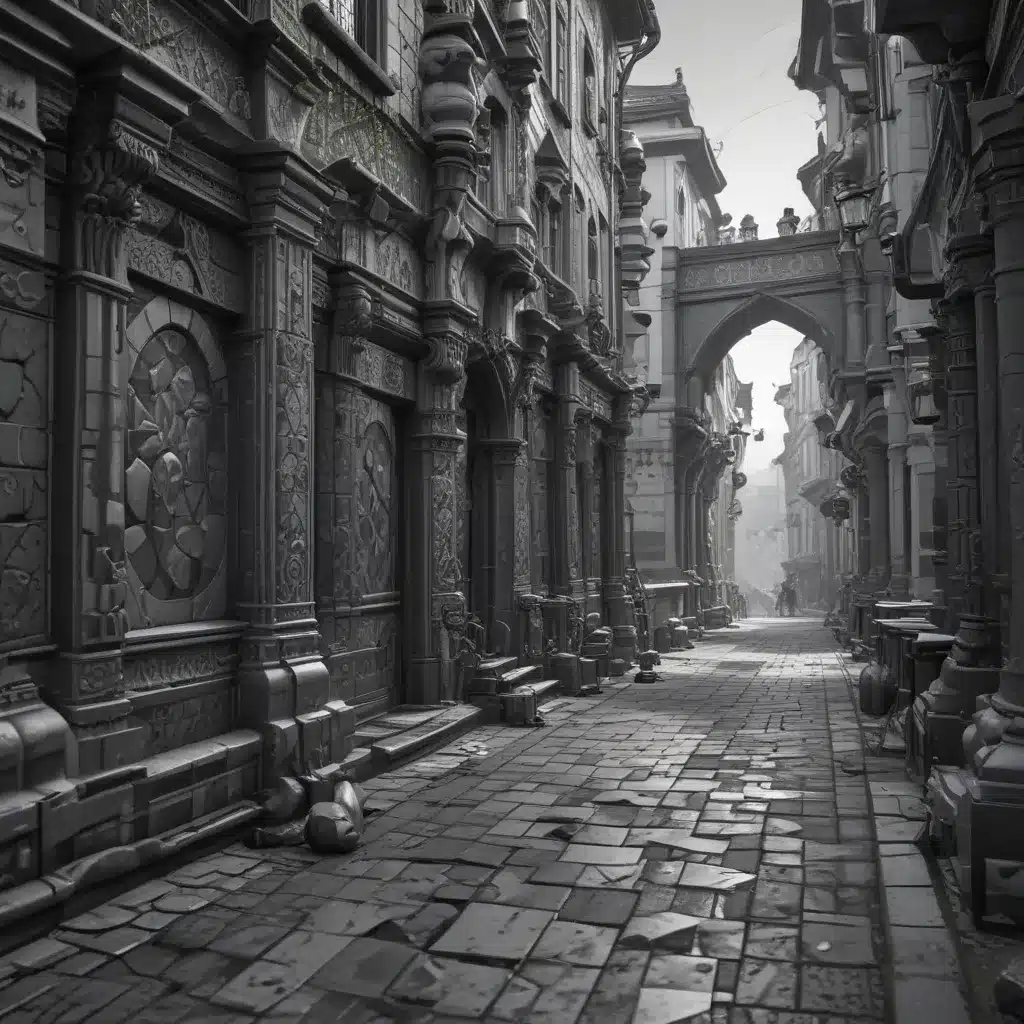The GPU’s Tessellation Tango
Have you ever wondered how your trusty graphics card wrangles those intricate visual effects that make modern games look so darn good? Well, buckle up, because I’m about to take you on a journey through the technical wizardry of GPU-powered graphics.
Let’s start with tessellation, a technique that’s been a game-changer in the world of 3D graphics. Imagine you’re playing a game set in a lush, fantasy world. The landscapes are covered in rolling hills, rocky cliffs, and dense foliage. What you might not realize is that your GPU is working overtime to make those seemingly smooth surfaces look so lifelike. [1]
You see, back in the old days, game developers had to rely on pre-baked textures and static meshes to create their virtual environments. But then along came tessellation, a process that allows your GPU to dynamically subdivide those flat polygons into a whole bunch of smaller ones. This creates the illusion of depth and detail, without the need for higher-resolution models or textures.
But here’s where things get interesting: different GPUs handle tessellation in, well, different ways. [2] In the great battle of AMD vs. NVIDIA, it turns out that AMD’s cards are generally better equipped to handle moderate levels of tessellation, say between 2x and 16x. Anything beyond that, and you might start to see a noticeable drop in performance.
On the other hand, NVIDIA has been known to crank up the tessellation factor to the extreme, sometimes reaching levels as high as 64x. While this can create some truly impressive visual effects, it can also grind your AMD-powered rig to a halt. The solution? Dive into your Radeon Adrenaline settings and manually adjust the tessellation level until you find the sweet spot between performance and eye candy. [2]
Ambient Occlusion: The Subtle Sidekick
But tessellation isn’t the only visual trick up a GPU’s sleeve. Ambient occlusion is another technique that can have a big impact on the overall look and feel of a game. [3]
Imagine a dimly lit dungeon, with shadowy corners and recessed areas. Ambient occlusion is what helps to create that sense of depth and atmosphere, by simulating the way light interacts with the environment. It’s a subtle effect, but one that can make a huge difference in how realistic and immersive a scene feels.
Unlike tessellation, ambient occlusion doesn’t require nearly as much GPU horsepower. In fact, most modern GPUs can handle it without breaking a sweat. The tradeoff, though, is that the visual impact can be a bit more subjective. [4] Some players might find that ambient occlusion adds a touch of cinematic flair, while others might feel that it makes the game look a little too “muddy” or dark.
That’s where the power of customization comes in. Many games these days offer the ability to adjust the intensity of ambient occlusion, or even turn it off entirely. So if you’re not a fan of the way it looks, or if you’re struggling with performance on your rig, you can simply tweak the settings until you find the perfect balance.
Putting It All Together
So there you have it, a glimpse into the technical wizardry that goes on behind the scenes of your favorite games. Tessellation and ambient occlusion are just two of the many visual effects that modern GPUs are tasked with handling, and the way they do it can have a big impact on both the look and performance of your gaming experience.
The key is to understand the strengths and weaknesses of your particular graphics card, and to be willing to experiment with the settings to find the perfect combination of visual fidelity and frame rates. With a little bit of tinkering, you can unlock the full potential of your GPU and enjoy the kind of immersive gaming experience that leaves your friends wondering how you managed to make it look so darn good.
References:
[1] Knowledge from https://www.reddit.com/r/Amd/comments/ndbawu/amd_gpu_pro_tip_in_adrenaline_set_tessellation/
[2] Knowledge from https://forums.guru3d.com/threads/batman-arkham-city.328024/page-40
[3] Knowledge from https://www.reddit.com/r/skyrimmods/comments/l9dxlm/common_settings_you_can_disable_in_enb_to_gain/
[4] Knowledge from https://forum.unity.com/threads/new-3d-text-technology-for-unity-5-0.251254/
[5] Knowledge from https://www.reddit.com/r/BattlefieldV/comments/9xgr78/bfv_performance_impact_of_each_graphics_setting/
[6] Knowledge from https://www.quora.com/Whatre-the-most-resource-consuming-graphic-effects-used-in-video-games
[7] Knowledge from https://forums.tomshardware.com/threads/gta-v-high-end-pc-very-bad-quality-graphics.3354322/
[8] Knowledge from https://medium.com/@TheIneQuation/the-vanishing-of-milliseconds-dfe7572d9856













